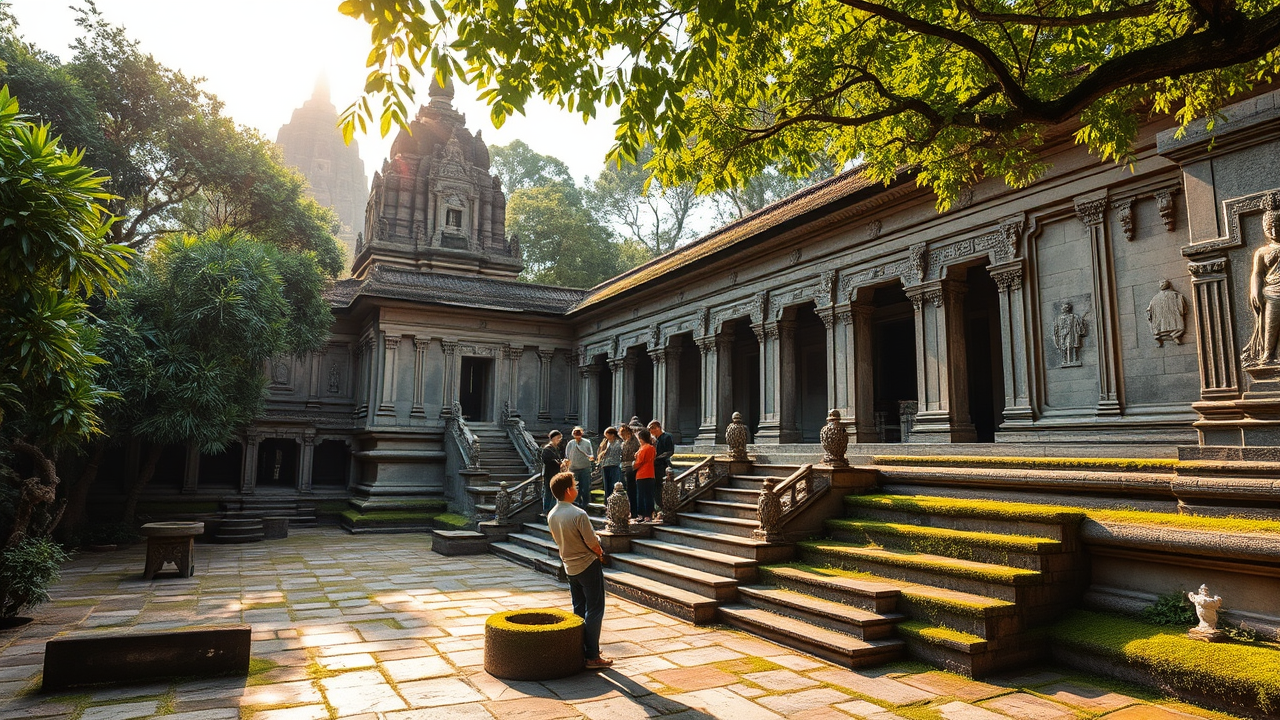# Discovering the Magnificence of Ancient Temples: Guardians of Humanity’s Heritage
Travelers with a passion for history and culture often find themselves irresistibly drawn to the awe-inspiring temples that have withstood the test of time. These monumental structures are more than just stone and mortar; they are the embodiment of past civilizations’ spiritual beliefs, artistic mastery, and societal values. Exploring ancient temples offers a unique window into human history, allowing us to connect with the spiritual and cultural heritage of bygone eras. In this blog post, we’ll journey through some of the world’s most iconic ancient temples, marvel at their architectural brilliance, and understand their lasting cultural significance.
## The Temples of Angkor, Cambodia: A Jungle of Wonders
Nestled amidst the lush greenery of Cambodia, the Angkor archaeological complex is a sprawling testament to the Khmer Empire’s grandeur from the 9th to 15th centuries. Among its many marvels, Angkor Wat stands out as the largest religious monument in the world—a breathtaking symbol of divine architecture.
### Architectural Marvels and Intricate Carvings
Built in the early 12th century, Angkor Wat features five towering spires that symbolize Mount Meru, the sacred mountain in Hindu cosmology. The walls are covered with elaborate bas-reliefs depicting epic tales from Hindu mythology, including the Ramayana and Mahabharata. Walking through these corridors, visitors can admire intricate stone carvings and sculptures that reveal the artistic skills of ancient Khmer artisans.
### Spiritual Significance and Preservation
Once a Hindu temple, Angkor gradually transitioned into a Buddhist site over the centuries. Modern conservation efforts and guided tours enrich visitors’ understanding of its spiritual history and architectural intricacies. Educational programs highlight the importance of preserving this UNESCO World Heritage site for future generations.
## The Pyramids of Egypt: Mysteries of the Pharaohs
No exploration of ancient temples and monuments would be complete without a mention of Egypt’s iconic pyramids. These colossal structures are the ultimate symbols of ancient Egyptian civilization, showcasing their architectural innovation, religious beliefs, and social organization.
### The Great Pyramid of Giza: An Engineering Marvel
Constructed around 2580–2560 BC during the reign of Pharaoh Khufu, the Great Pyramid is a marvel of engineering. Originally standing at 146.6 meters (481 feet), it was the tallest man-made structure for over 3,800 years. Visitors today can walk through the pyramid’s tunnels and explore the legends surrounding its construction.
### Beyond the Pyramids: Temples and Ritual Sites
Adjacent to the pyramids, temples like the Temple of Karnak and Luxor illustrate Egypt’s sophisticated religious complex. These grand structures feature towering columns, massive statues, and elaborate hieroglyphic carvings that depict religious rituals and deities. Guided tours provide rich narratives about Egyptian beliefs about the afterlife and divine kingship.
## The Ruins of Greece: Echoes of Ancient Greece
The archaeological sites in Greece reveal the grandeur of Classical civilization. Recognized for their architectural innovation and cultural influence, these ancient temples reveal the spiritual and artistic achievements of Greece.
### The Parthenon: A Symbol of Athens’ Glory
Perched atop the Acropolis in Athens, the Parthenon was built between 447 and 432 BC as a temple dedicated to the goddess Athena. Its iconic Doric columns and harmonious proportions exemplify classical Greek architecture.
### Exploring the Temples and Their Legacy
Beyond the Parthenon, sites like the Temple of Olympian Zeus and Delphi’s Temple of Apollo provide insights into Greek religious practices. Educational programs and archaeological tours help visitors appreciate their significance in fostering democracy, philosophy, and art.
## Preserving Ancient Temples for Future Generations
These ancient temples are invaluable cultural treasures—testaments to human ingenuity, spirituality, and artistic expression. Conservation efforts, guided tours, and educational programs play crucial roles in safeguarding these sites. By understanding their history and significance, visitors can foster appreciation and ensure their preservation for generations to come.
—
Traveling to these majestic sites isn’t just about admiring stone structures; it’s about immersing yourself in human history and cultural identity. Whether wandering through the jungles of Angkor, exploring Egypt’s pyramids, or walking amid Greece’s classical ruins, each step unveils stories of civilizations that continue to inspire and fascinate us today.
**Keywords:** ancient temples, Angkor Wat, Pyramids of Egypt, Greek temples, archaeological sites, cultural heritage, historical landmarks, UNESCO World Heritage, temple architecture, preservation
Author: Lucien Farah
Category: Historical Landmarks

Leave a Reply